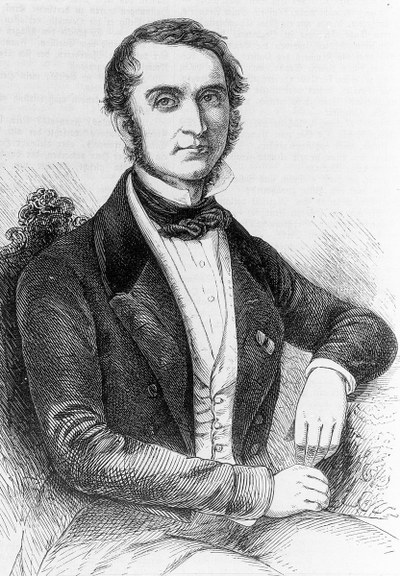Justus Liebig (our Eponym)
Some facts about Justus von Liebig, the eponym of our university.

Here Liebig began his job with unmatched zeal and was soon able to demonstrate considerable scientific results. One of his main fields of research was organic chemistry – an extremely difficult and scarcely explored area at the time. Liebig was able to greatly improve the analysis of elements by introducing two methodological novelties – the separation of nitrate from carbon/hydrogen analysis, and the introduction of the ‘kali apparatus’ (a five-bulb device that used a potassium hydroxide solution to remove the organic combustion product carbon dioxide). These discoveries went on to become standard routines permitting rapid and reliable analysis of the components of a wide range of organic materials.
From the late 1830s onwards, Liebig shifted his research focus to physiological chemistry – the research of plant and animal metabolism. His treatise “Organic Chemistry in its Application to Agriculture and Physiology” (1840), in which he underscored the necessity for mineral fertilization of the soil, made him an international luminary in the field of chemistry.
As was the case with his improvements to the analysis of elements, Liebig’s thoughts here were not new, but it was his elegant formulation of problems and their solution that yielded the decisive breakthrough. In “Animal Chemistry” (“Organic Chemistry in its Application to Agriculture and Pathology”), published in 1842, Liebig presented a model that showed the fundamental chemical processes involved in the digestive, respiratory, metabolic and assimilative processes in animal organisms. The merit of this publication lies in the fact that Liebig put the focus of physiological research on the breakthroughs achieved in chemistry, causing his peers to debate his theses (many of which, from today’s perspective, were wrong) and thereby opening new possibilities and paving the way for advances in medicine.
Liebig’s scientific achievements and his often astute publication strategies allowed him, while quite young, to achieve a significant reputation and enormous popularity – extending far beyond the borders of Germany. On 29 January 1845, he was given a baronetcy in the grand duchy of Hesse.
The foundations of Liebig’s scientific success lay in the research and analysis conducted in his Giessen chemistry laboratory. It was here that empirical research was for the first time conducted on a large scale. Liebig’s pragmatic style of teaching, in which research and teaching went hand in hand, soon became the model for the university teaching of the natural sciences worldwide. His incomparable popularity as a teacher attracted increasing numbers of students to Giessen from home and abroad.

Liebig left Giessen in 1852 after accepting a call to Munich University. Here he served primarily as a beacon of the sciences and, from 1859 onwards, as president of the Bavarian Academy of Science. He died in Munich on 18 April 1873.
The Liebig Museum, established in 1920, commemorates Liebig and his scientific achievements. It is regarded as one of the most impressive chemistry museums in the world, owing to its exceptionally well-preserved historical laboratory facilities.
Giessen University chose Justus Liebig as its eponym in 1946. “Justus Liebig University” thereby commemorates the personality and scientific achievements of one of its most famous thinkers and teachers, the man who put Giessen and its university on the map, well beyond the narrower confines of the state of Hesse.
(Translation of a text by Eva-Marie Felschow)
